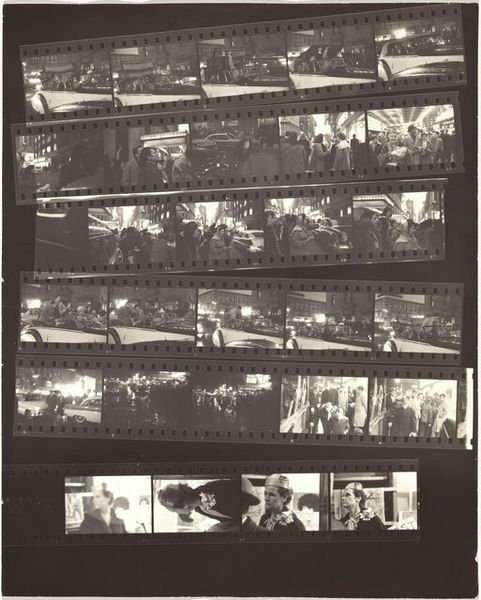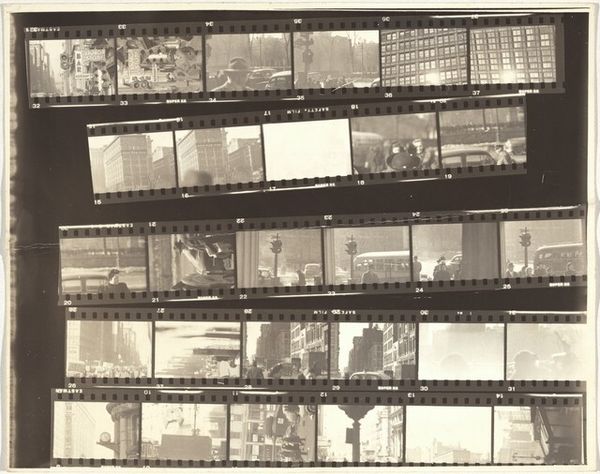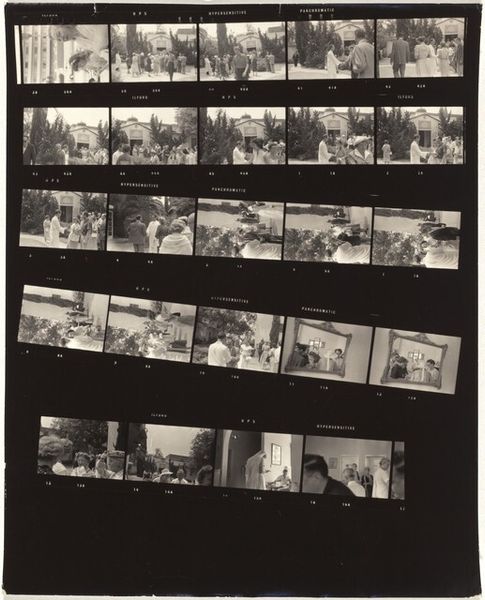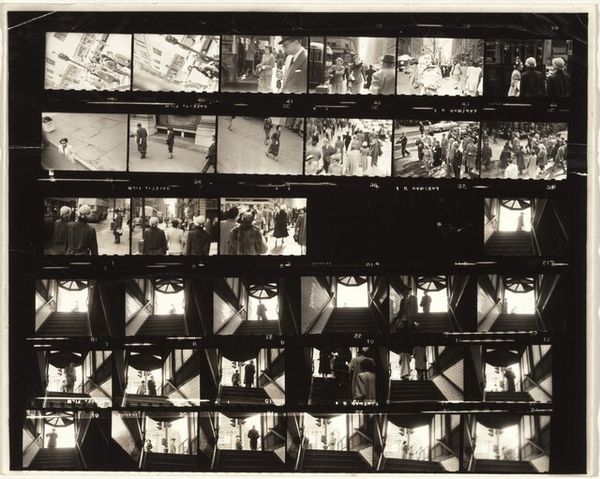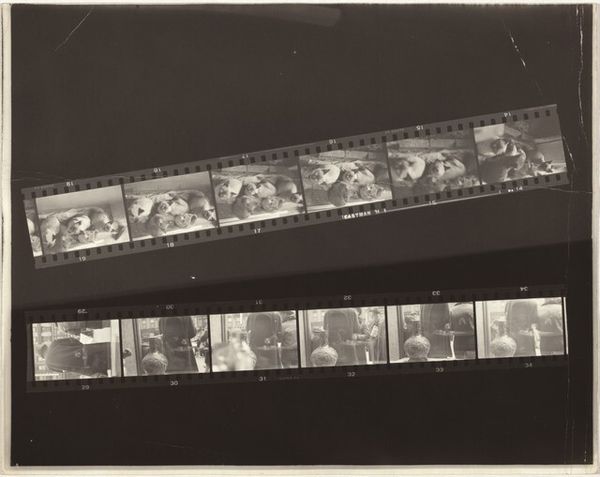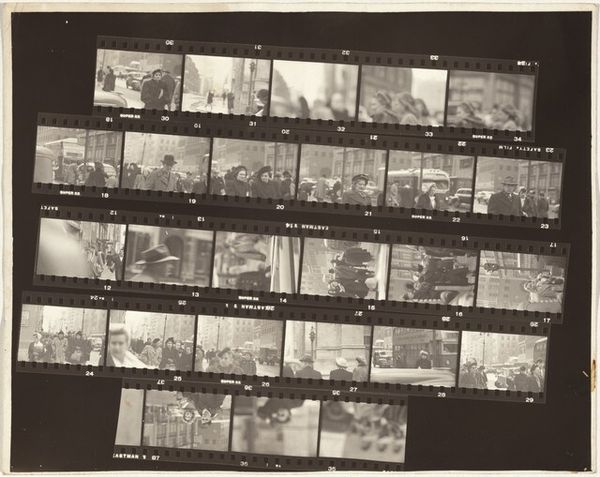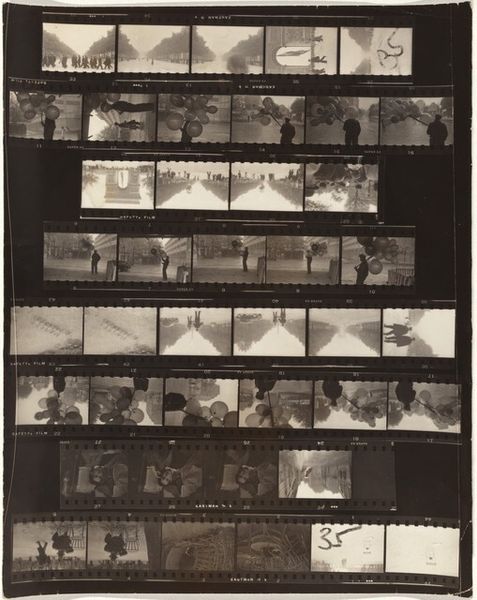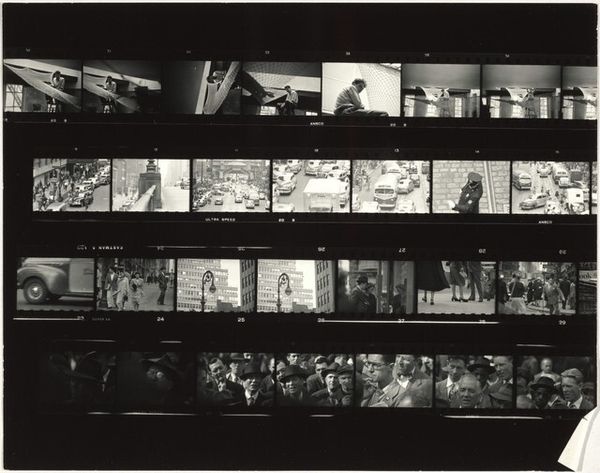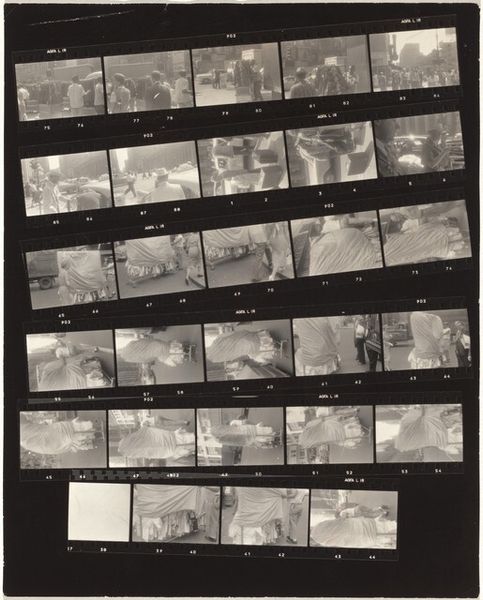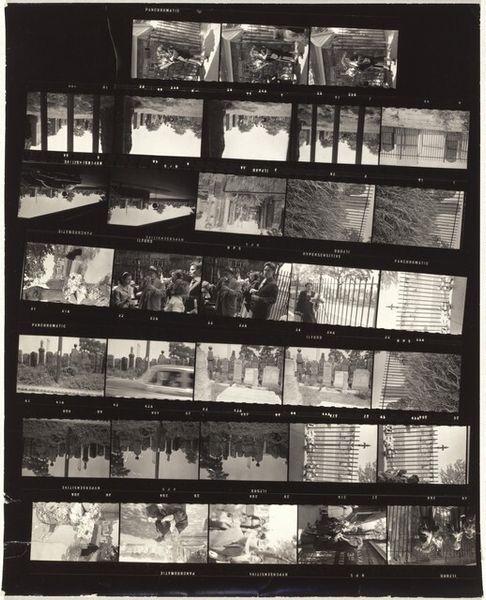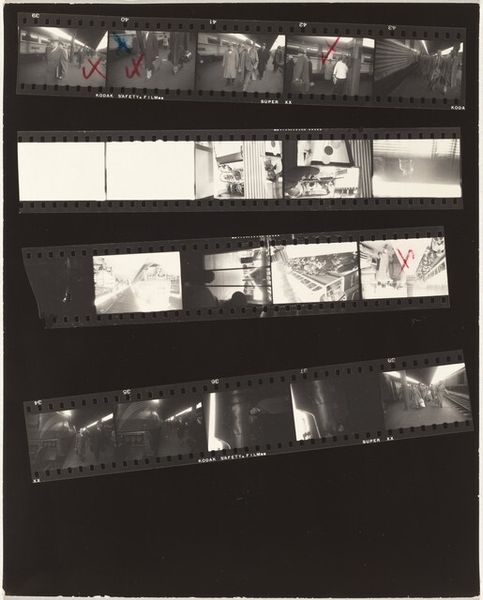
Dimensions: overall: 20.3 x 25.3 cm (8 x 9 15/16 in.)
Copyright: National Gallery of Art: CC0 1.0
Curator: This is "Graduation--Early New York City no number", a gelatin silver print made circa the early 1950s by Robert Frank. Editor: What strikes me immediately is the fragmented narrative. It's like a memory reel, glimpses of celebration and regimentation juxtaposed. Curator: Precisely. Frank often challenged traditional photojournalism, moving beyond simple documentation. His lens, here, observes not just the celebratory act, but also the socio-political climate of the era, particularly how different groups experience and participate in public rituals. Editor: I see the uniformed figures, almost militaristic in their precision, alongside what seems like a joyous, albeit indistinct, crowd. There’s a stark contrast in how these groups present themselves, and it speaks volumes about post-war America, doesn’t it? The collective versus the individual, power versus… well, aspiration? Curator: It does. Consider, too, the period – early 1950s America was fraught with tensions around social conformity and Cold War anxieties. The parade itself might signify triumph and order, but Frank subtly disrupts this message. Editor: By capturing the blurred edges, the less-than-perfect moments. He's questioning the constructed narrative of unity and progress. The very format—the contact sheet itself—further emphasizes the provisional, contingent nature of representation. This isn't a definitive statement; it’s a series of possible readings. Curator: Frank's outsider status, being a Swiss immigrant, undoubtedly informed his perspective. He had a unique ability to see beyond the patriotic facade and expose the underlying complexities and contradictions in American society. His work urges us to look beyond official narratives. Editor: This image encapsulates that beautifully; it prompts me to rethink the familiar tropes of American celebratory culture through a lens of social unease and cultural critique. It makes one reflect on the narratives we construct, both consciously and unconsciously, and the people excluded from them. Curator: Yes, ultimately it's an invitation to delve into the socio-political landscape of the time, challenging dominant narratives and prompting viewers to question whose stories are being told, and from whose perspective.
Comments
No comments
Be the first to comment and join the conversation on the ultimate creative platform.
